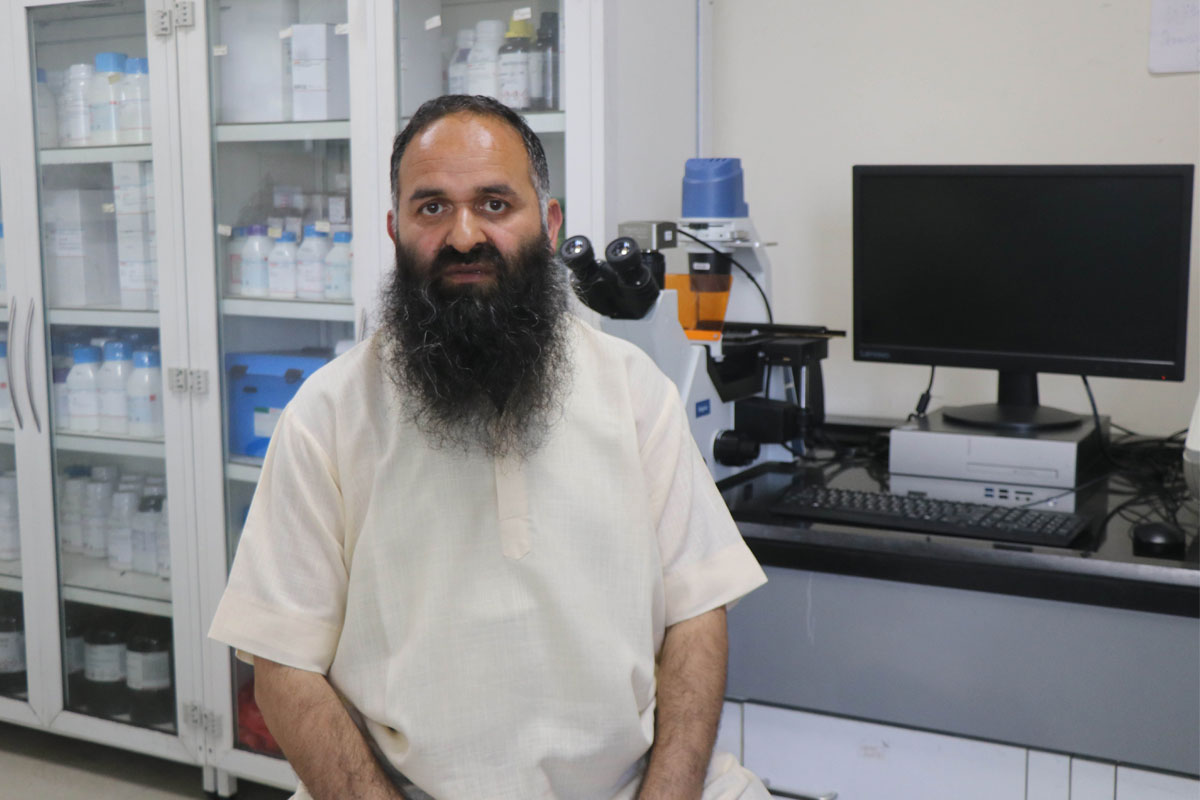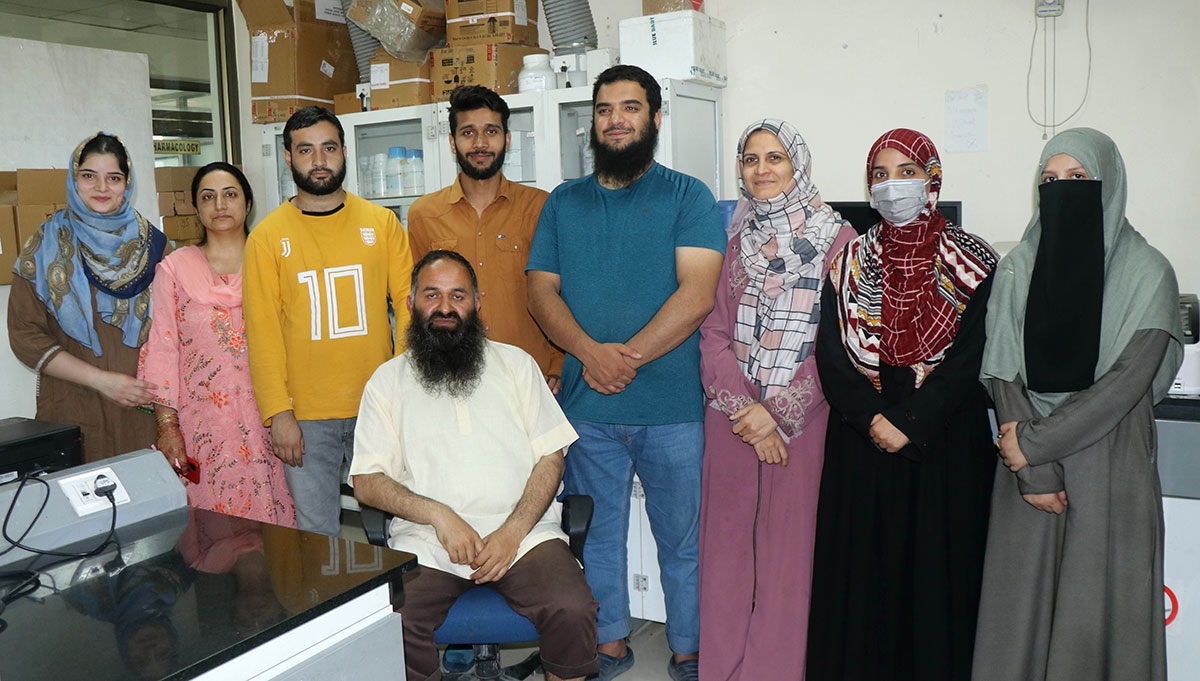Awarded for his research in microbiology last week, CSIR-IIIM Principle Scientist, Dr Zahoor Ahmad Parray has been primarily working on the drugs involving Tuberculosis. In a freewheeling interview with Masood Hussain, the scientist details his learning curve and the research investigations at PGIMER, John Hopkins, CSIR Pretoria and the IIIM, Srinagar
KASHMIR LIFE (KL): What is the state and status of Tuberculosis (TB) in Kashmir and all around the world?
DR ZAHOOR A PARRAY (ZAP): There was a time when it was said that there can be no cure for Tuberculosis. But in 1943, Streptomycin was discovered for TB treatment. Now there are approximately two dozen of antibiotics that cure TB. They are set in three categories that include the first line of patients with a six-month course, a two-year course for patients who lack resistance, and a two-year course for patients who are multi-drug resistant.
WHO estimation suggests a success rate of 90 per cent in the last 20 years in preventing about 55 million people from dying of TB. It is all about the right diagnosis, right treatment, and care that have saved all these lives.
At the same time, however, TB is one of the most dangerous infectious diseases. At least one-third or one-fourth of the population is actively suffering from it. Approximately one million people all around the world are diagnosed with TB per year and almost 1.5 million die because of it. The main issue of TB is a deformity. A 1997 TB by WHO suggests around 9.7 million children were orphans as one or both of their parents died of TB.
India is concerned as one of the highest TB-burden countries with at least 2 to 2.8 million cases per year. Between 2014 and 2018, forty thousand people suffer from TB.
Recognizing the problem, the United Nations General Assembly on September 26, 2018, decided to fight against TB under United to end tuberculosis: an urgent global response to a global epidemic by 2030. Certain targets were set regarding diagnosis, medication, and funding to eradicate TB. There was also an ambitious project further set by Prime Minister Narendra Modi, to eliminate tuberculosis by 2025.
KL: What are the common symptoms that can determine if a person has been infected with TB bacteria and should go for testing?
ZAP: TB can infect any organ of the human body. It manifests indirectly with other diseases of the respective organs. So, it is quite difficult for the patients and doctors to recognize it in the first instance. For instance, if someone is suffering from stomach TB, it mimics H Pylori infection and misleads the doctor. If someone is suffering from bone TB, doctors suspect a bone disorder. Routinely, doctors are unable to determine TB at first. They generally give preference to antibiotics at first and when there is no response from the patient to the medication, they diagnose them with TB.
Usually, TB symptoms involve weight loss, loss of appetite, constant fever, night sweats, chest pain, chills, coughing up blood, and many more including specific organ pain. Supposing that someone is undergoing hip TB, it is very difficult to diagnose such a disease and we test such diseases by indirect methods.
Nowadays, especially in Kashmir, we have infertility issues. Now gynaecologists claim that in around 30 per cent of cases these infertile females were diagnosed with TB of the intra-uterine tract. So, when these patients get the TB treatment of six months, they are able to conceive. So treating TB requires a tedious process of diagnosing it first.
The crisis is that people suffering from TB do not come out due to social stigma. They do not speak about it openly. This is despite the fact that TB is 100 per cent curable.
KL: How has your expedition in terms of career and education been till now?
ZAP: I had primary schooling at Salafia Muslim Institute Yaripora, which has been there for more than seven decades and has made a marvellous contribution to the field of education. I did my high school at Government Higher Secondary School, Yaripora and then joined Government Degree College, Anantnag. There, I had a teacher who always adored me and helped me throughout.
I did my masters from the Biochemistry department at the University of Kashmir. Then, I joined the Postgraduate Institute of Medical Education and Research (PGIMER), Chandigarh for a PhD. Then I went to South Africa, Pretoria, for my postdoc where I worked in (CSIR) Council for Scientific and Industrial Research and researched nanotechnology and material manufacturing polymer-ceramics. Subsequently, I did my second Post Doc at John Hopkins, Centre for TB Research, Baltimore, Maryland.
Eventually, in 2010, I shifted from John Hopkins to CSIR IIIM, and to date, I am working there only.

KL: What were the main takeaways from your PhD and Post Doc?
ZAP: At PGIMER, I researched alginate nanoparticle-based anti-TB drug delivery. The idea was to reduce the duration of the medication course of the TB patients so that they would not require taking it on daily basis. Then we came up with the nanotechnology-based drug delivery system that has the advantage of taking it once a fortnight. The system in vogue is that a person, for instance, supposed to take four tablets daily ends up taking sixty tablets in 15 days. With the nano-particle drug system, we demonstrated the same person can take only take one tablet for two weeks and it will work the same way. The success rate of it was seen as better in a guinea pig model. We examined the model in mice as well. Now, it is in clinical trials. Secondly, I worked on Azole (a class of five-membered heterocyclic compounds containing a nitrogen atom and at least one other non-carbon atom as part of the ring) antifungal drugs. I carried out an experiment to demonstrate, for the first time in Jalma lab, Agra, that they have anti-TB potential to curve resistance strain of TB. ICMR funded this study for Prof Khullar and his team to validate this in humans.
In my postdoc, I dealt with how we can improve and ameliorate the quality of polymer in nano-particles so that it can be human-friendly.
Later at John Hopkins, my focus was on the development of new anti-TB drugs. There was an important drug that is now almost conditionally approved in humans, known as PA24. When phase two testing of this medicine was examined for its effectiveness in humans, it was seen that it has no dose-response. So, when the results were further extended to us, we saw and proved that it was wrongly evaluated. So, it is always advised to scientists all over the globe that molecule may be right but evaluation may be wrong.
Besides, I did a series of experiments that got published and were forwarded to clinical settings, then this compound was re-evaluated in phase two trials and our claims were proved 100 per cent correct.
There was also one more study on the fluoroquinolone (highly effective antibiotics) series in which the newest fluoroquinolone was DC-159a. There was no study about whether it could be effective against TB or not. I investigated this and established its potency against TB. My study was published and the drug was forwarded for clinical development.
The third and critical question that revolved at that time was related to the drugs evaluated in mice and what was the difference between human TB pathology and mice TB pathology. We saw that TB in humans is more dangerous than in mice because mice lack a robust immune system. So, when I was at Hopkins, I studied how we can generate the same TB pathology in a guinea pig model as in the human lungs so that in the future we would be able to make the medication effective accordingly. So, based on the series, I have published five international research papers that are now used as a reference model.
Besides, one of the major TB traits is that it is the friend of all the foes of the human body. TB bonds greatly with HIV, diabetes, kidney issues, and cancer, and, in certain conditions, it becomes aggressive, leading to human death.
The issue was whether there is a drug available for TB, which could be used in HIV cases, where weak nutrition is weak and the person is immune-compromised. There was no study on this issue. We worked on it and showed a comparison of two individuals with HIV and another HIV negative having a wider TB drug response.
KL: What is your research focus at CSIR-IIIM?
ZAP: For me, CSIR was challenging in different aspects. The first idea that I developed at CSIR was how to reduce the medication of two-year courses for drug-resistant TB patients. My goal was how we can treat a TB patient in less than two years. Unfortunately, however, we lacked a setup for that at CSIR. So, I wrote to different global investigators about this idea. There was one drug combination that could treat or at least give a clue to drug-resistant patients and cure them in 10 months rather than in two years. I wasn’t able to figure that out in CSIR, so I was given a lab space at John Hopkins for that trial. After that, I published that paper in the American Journal of Critical Care Medicine with the first authorship of my own. Now, in India, the Bedaquiline drug is recommended for (MDR) Multi-Drug Resistant patients and that treatment is also for less than a year.

At CSIR when we analyzed TB prevalence and found we also have drug-resistant forms of TB, which are more difficult to treat. We raised new concepts that would benchmark new drug discovery. We came up with a new molecule, which was never evaluated against any microbe. We abbreviated that molecule in our lab as Palmitate. It was never evaluated against TB. The study was funded by ICMR, the Department of Biotechnology and the Department of Science and Technology including the CSIR. Now we have sufficient resources to implement this project.
Besides, we are also looking into a bacterial disease called meningitis, which is quite challenging and mostly found in children. One of the causes of meningitis is micro-bacterial TB. So, we wrote another project to ICMR and it was funded and we are right now working on Central Nervous System TB.
We also developed a molecule and hope that it will be effective against both TB as well as HIV.
We also came up with some anti-TB and anti-bacterial drugs for bacterial diseases that were extracted from actinomycosis bacteria. In today’s world, terrestrial actinomycosis has been explored almost fully but we came to know that some Ladakh springs have complete ocean substitutes and are salty. Eventually, we went there and examined those lakes and springs and extracted and characterized the actinomycosis and to our surprise, we found 60 strains from those, which can produce antibiotics against different diseases. And out of 60 strains, 37 strains showed activity against TB. Again, the Department of Biotechnology funded this entire project.
Apart from this, I worked with Dr Raja Kishor Roy, my colleague at Jammu, who is a peptide chemist. Together we are working on a project called drug-resistant tsunami which is considered a threat to scientists. Resistant bacterial infections have the potential to erase human history like a tsunami. So, we combined the negative or Amar potash bacteria with non-natural amino acid-based peptides for screening infections in urine, lungs, and GI tracts. There are many fatal pathogens called escape pathogens, for the dangerous trend they represent. This project is funded by CSIR.
Umaima Reshi processed the interview















